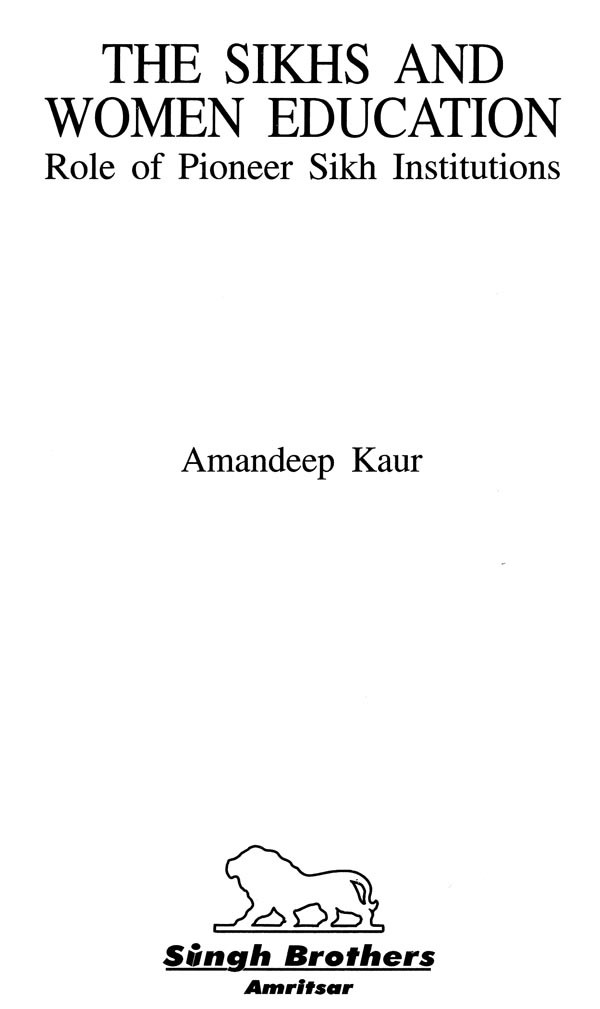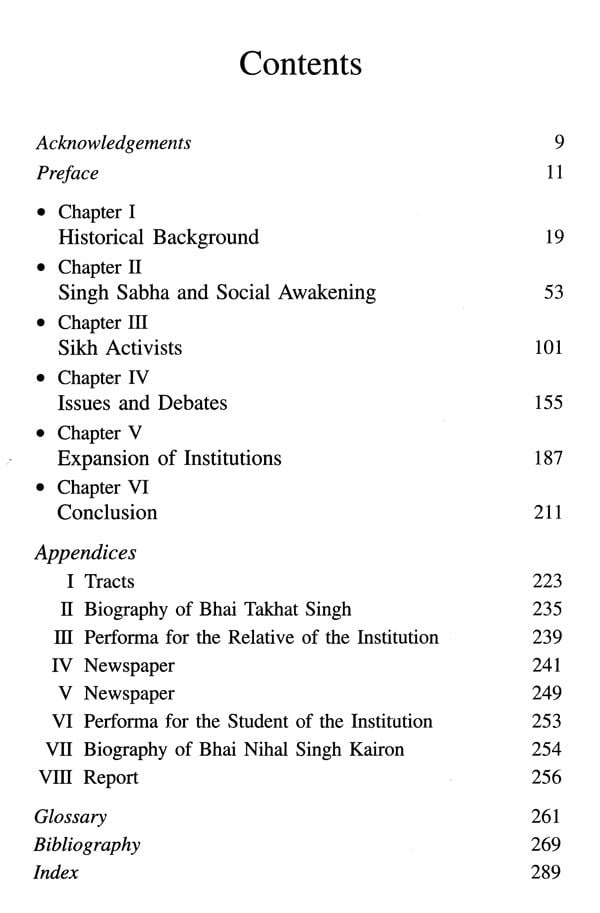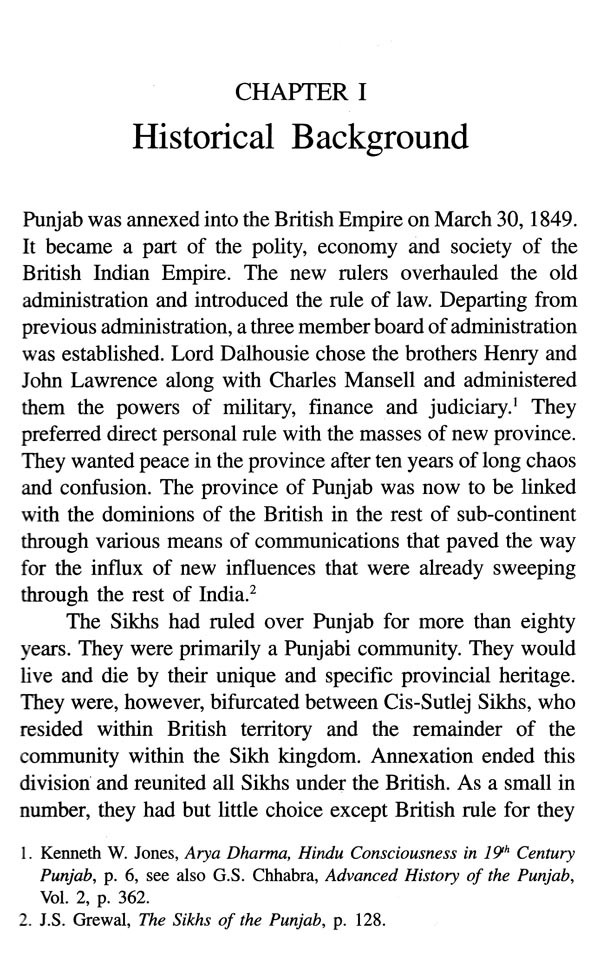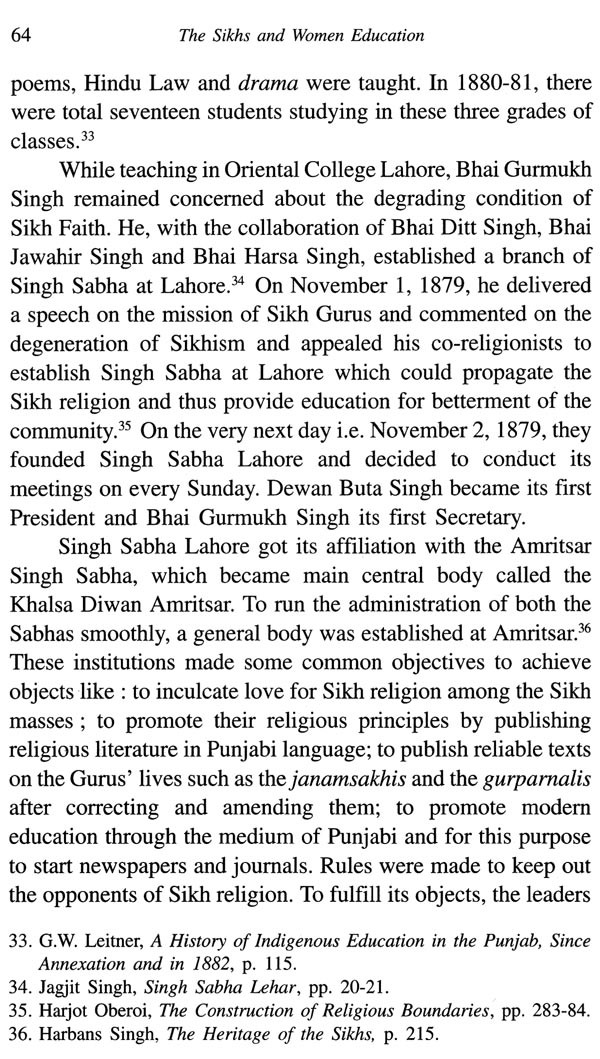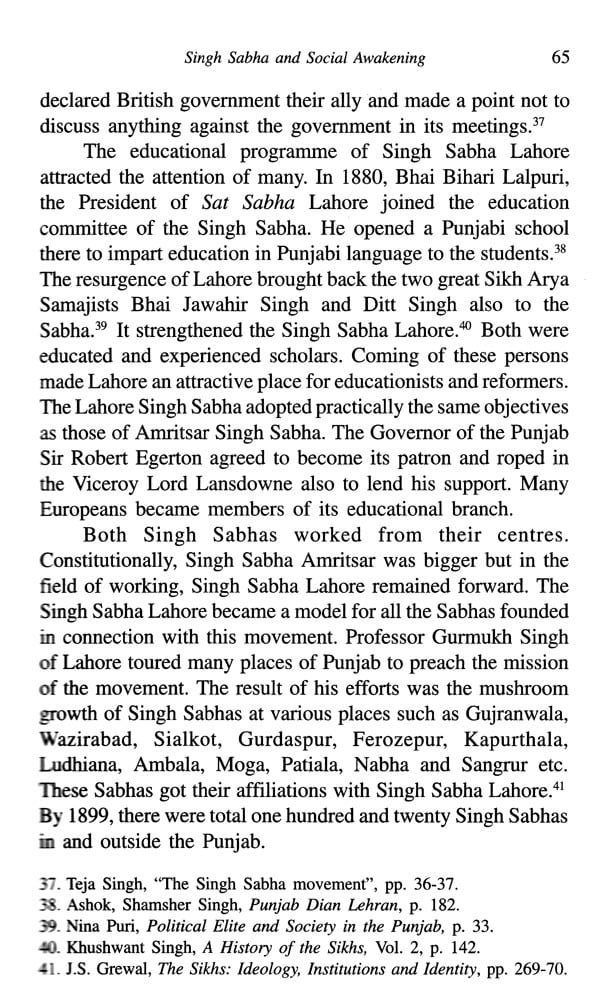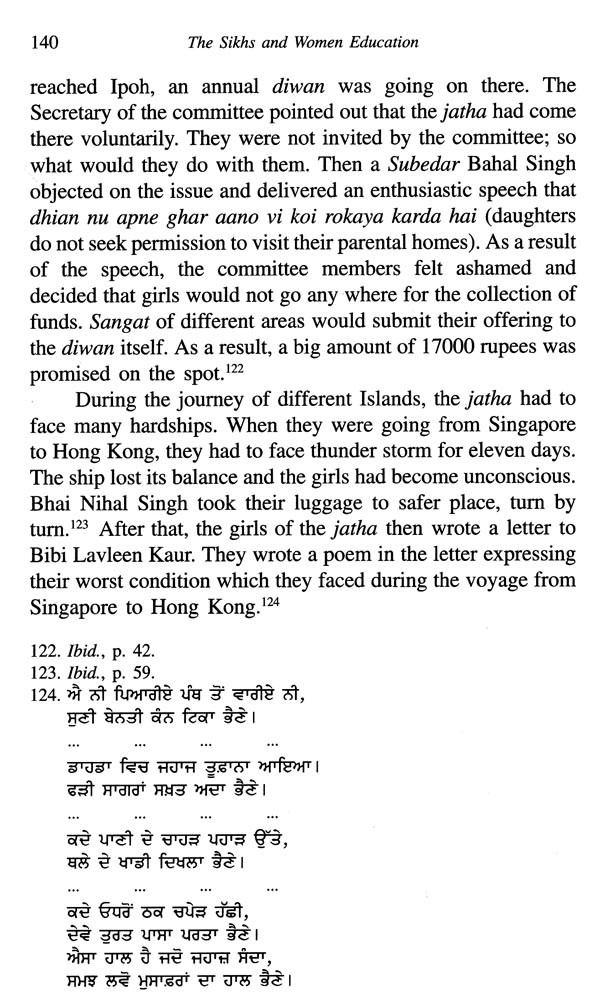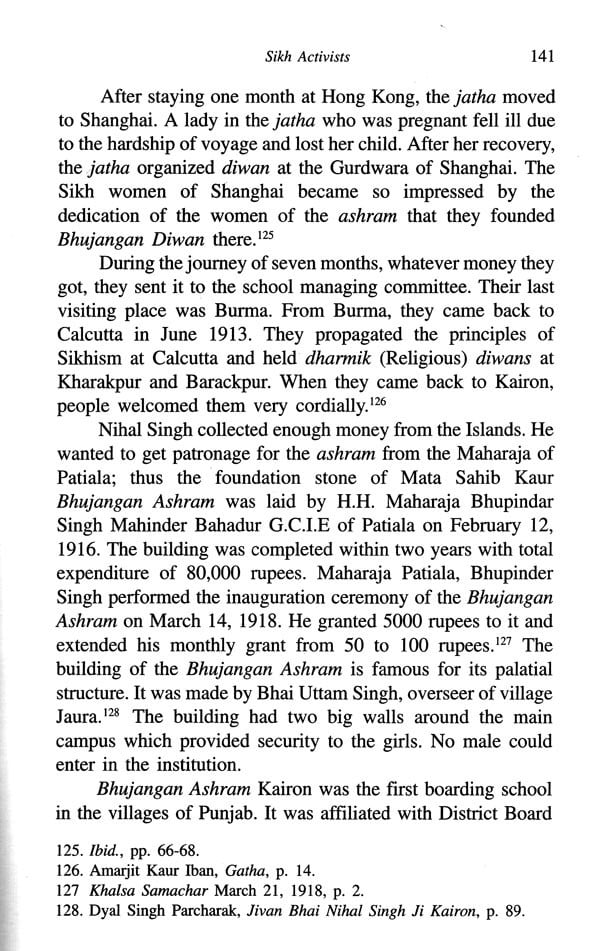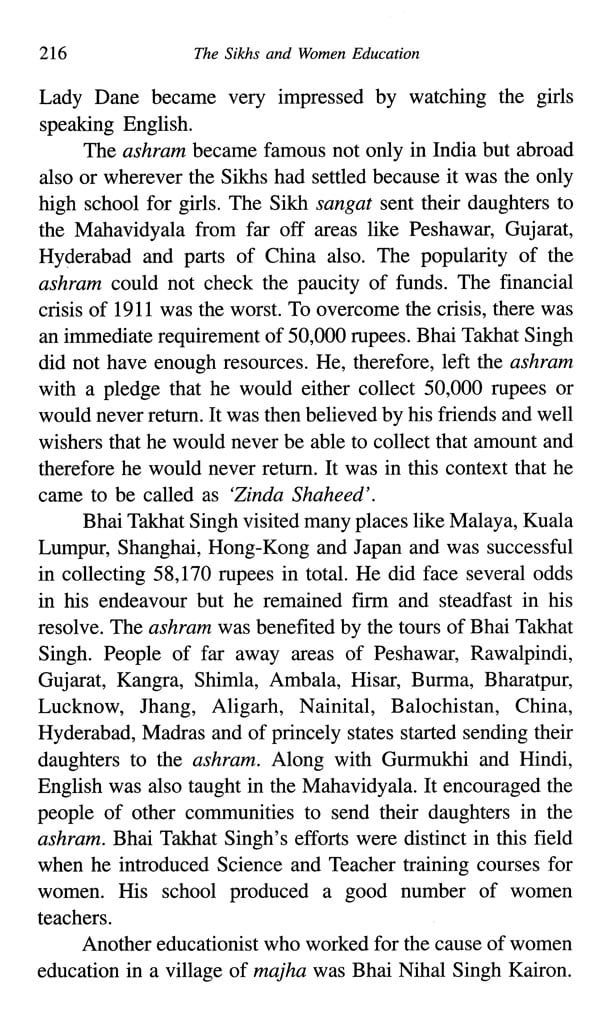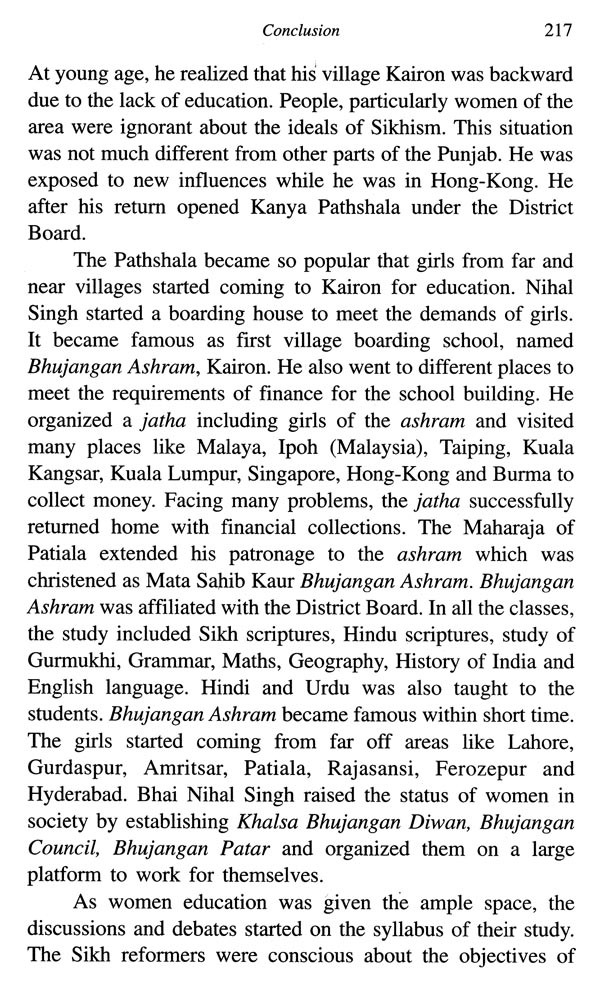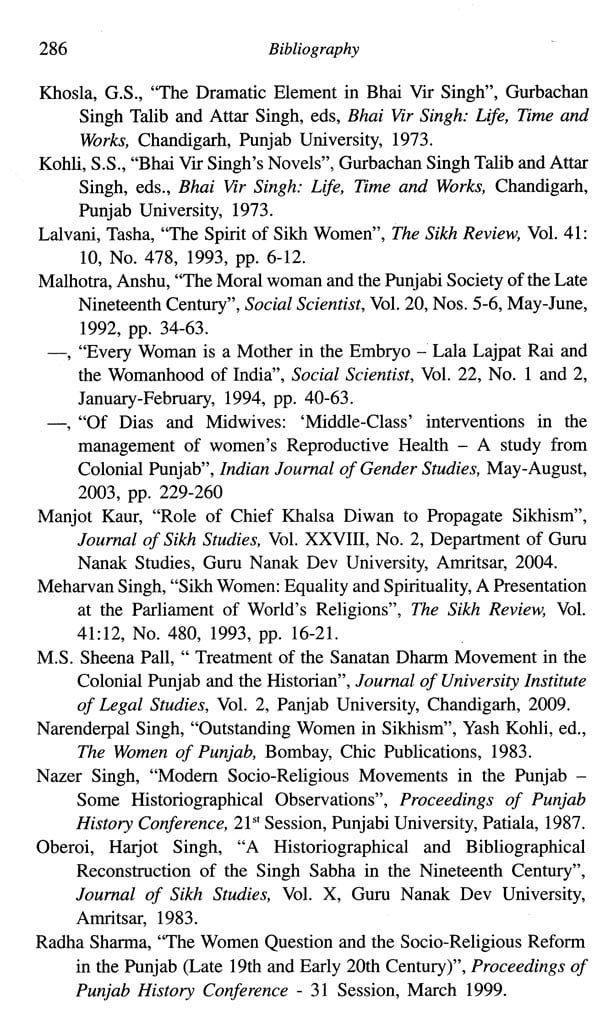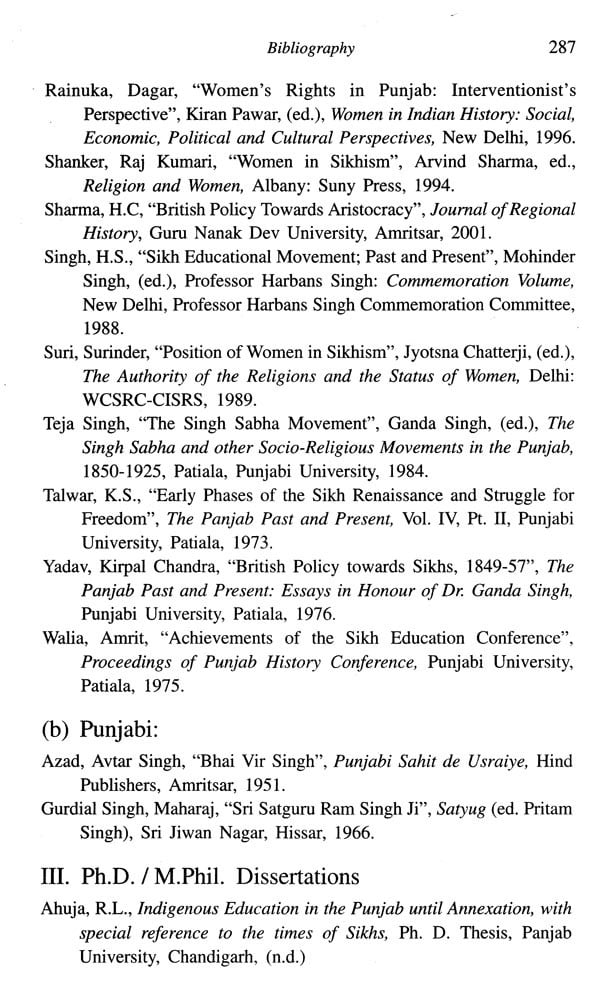About the Book This work is a significant contribution on the issue of women education in the Punjab. It is contextualized in the emergence of socio-religious identity awareness among the Sikhs and their response to the challenges thrown by colonial conditions engulfing the Punjab during late 19th and early 20th century.
Education among women became central to the programmes of the Singh Sabha movement. This question was nevertheless brought to focus by the Sikh activists like Baba Khem Singh Bedi, Bhai Takhat Singh and Bhai Nihal Singh Kairon. This well-documented study also focuses on the issues and debates which were raised in Sikh Educational Conferences on the question of women education and the type of education to be imparted to them.
The work is a comprehensive and detailed study based on primary sources especially the lesser explored vernacular literature. It is an elaboration of dialectical process of modernization of Sikh women in association with the Sikh ethos, values and culture.
About the Author Dr. Amandeep Kaur born in 1976 is an Assistant Professor in History at DIPS College, Dhilwan, Kapurthala in the Punjab. She did her Ph.D. in History from Guru Nanak Dev University, Amritsar. She has developed deep interest in women studies and has published research papers on the subject.
Preface An attempt has been made in this work to study the role of Sikh institutions in educating the Punjabi women during the late 19th and early 20th century in Punjab. With the annexation of Punjab in 1849, the Punjab became a part of the British Indian Empire. As a part of the British Empire, the Punjab came to witness innovations in the political, administrative, economic and social spheres which had already swept the rest of India. With the development of roads, railways, post, telegraph and the press, the Punjab came much closer to the rest of India than ever before. It opened new vistas for the Punjabis. New administrative policies and system of education meant the dissemination of new ideas particularly through the press. The different sections of the Punjabi society responded and reacted to the new opportunities from their own perspective.
**Contents and Sample Pages**
